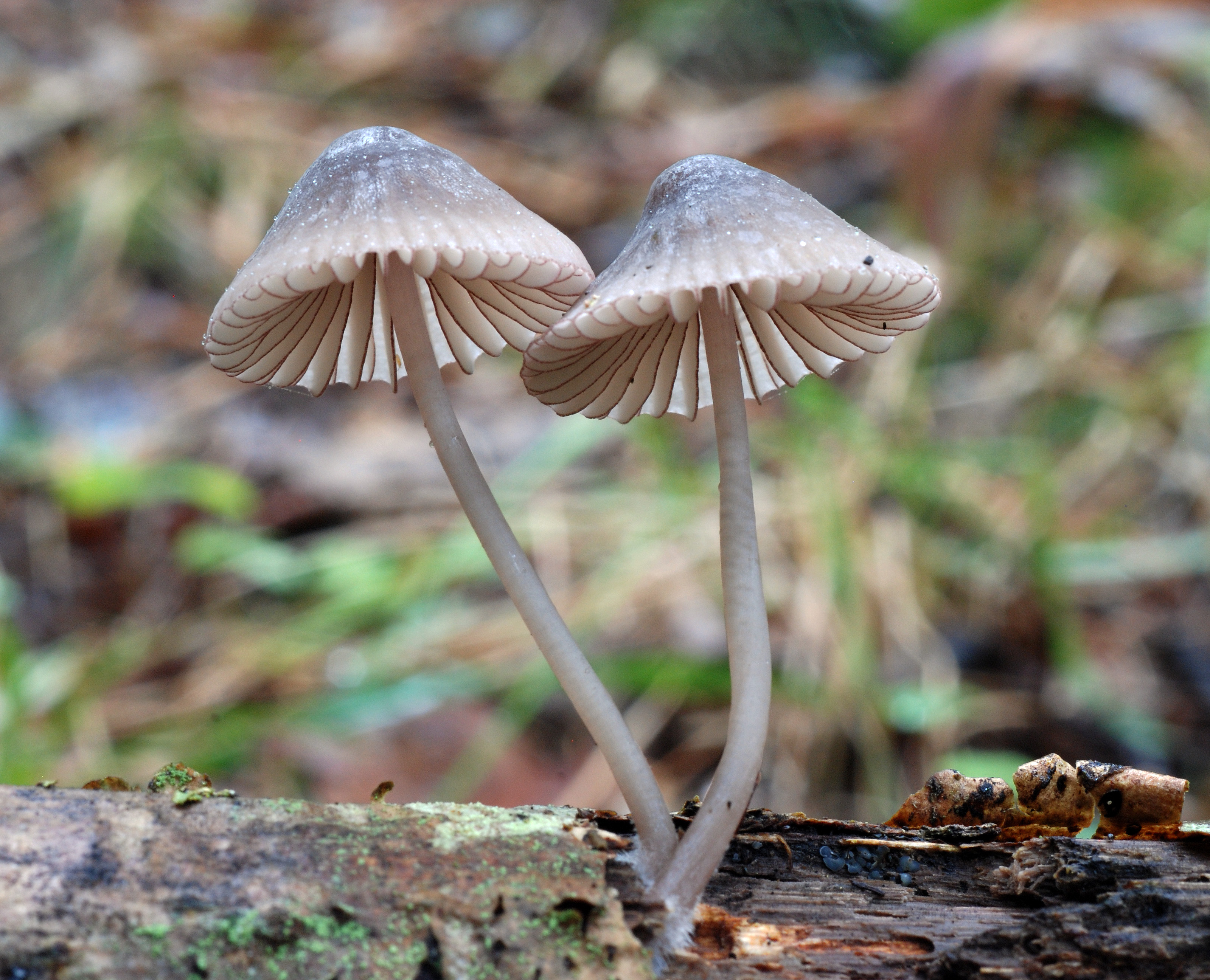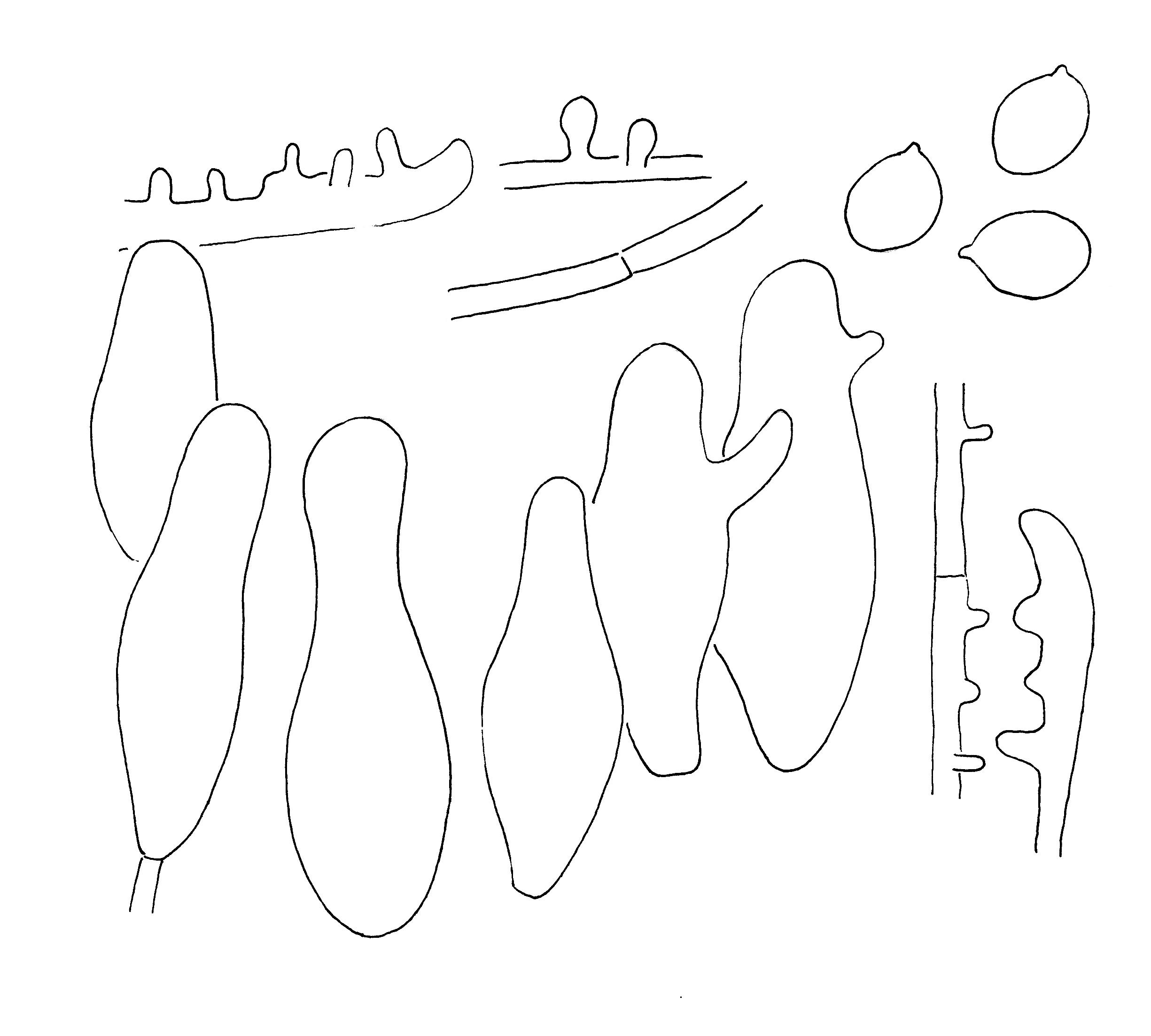Mycena purpureofusca
Mycena purpureofusca
Description
Hyphae of the pileipellis, spores, cheilocystidia, and hyphae of the cortical layer of the stem with terminal cell.
Cap 5-40 mm across, conical to campanulate, becoming almost plane with umbo, sulcate, translucent-striate, glabrous, somewhat lubricous when wet, at first dark brown with almost blackish violet centre and pale brown margin with a violet shade, becoming grey brown or grey to dark grey with a somewhat darker centre and a faint violet shade. Gills 20-30 reaching the stem, adnexed, ±decurrent with a short tooth, dorsally intervenose with age, white to grey with a very distinct violet edge. Stem 25-70(-100) x 1-3(-5) mm, cylindrical, equal or somewhat widened below, pruinose, glabrescent, smooth, but with age somewhat grooved lengthwise, grey-brown to greyish violet, towards the base usually darker brown with a violet shade, the base covered with white fibrils, often rooting. Odour none. Basidia 27-36 x 10-12 µm, clavate, 2- or 4-spored, with sterigmata 3-5 µm long. Spores ((7.5-)9-12.2 x (5.5-)6.2-8.2(-9) µm, Q = 1.2-1.5, Qav = 1.3, broadly pip-shaped, amyloid. Cheilocystidia 17-61 x 9-29 µm, forming a sterile band, clavate, fusiform, utriform to subcylindrical, smooth and apically usually broadly rounded, with lilaceous contents. Pleurocystidia absent. Lamellar trama dextrinoid. Hyphae of the pileipellis 1.5-6 µm wide, smooth to sparsely covered with warts or fairly coarse, cylindrical excrescences 2.5- 11 µm long. Hyphae of the cortical layer of the stem 2-3.5 µm wide, smooth or sparsely diverticulate, terminal cells +/- clavate, smooth or coarsely diverticulate. Clamps generally absent or very rare.
Ecology and distribution
Growing on decaying coniferous wood. Often found at the base of Picea or Pinus. Autumn. Distributed in southern parts of Norway up to Nordland, but not very common.


